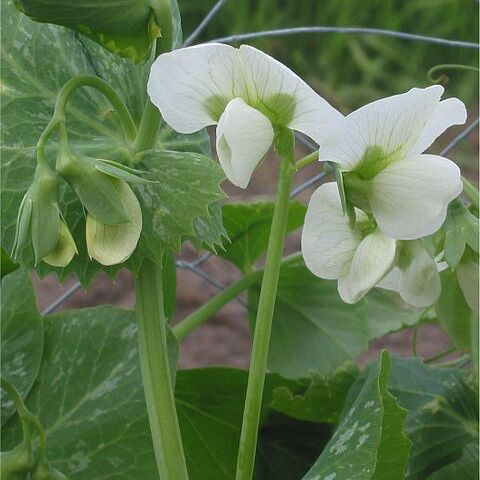Spreading or scandent herbs; stems terete, not winged. Lvs pinnate, tendrilous or mucronate; leaflets in 1-3 pairs; stipules semicordate and usually somewhat toothed. Infl. axillary, racemose, 1-few-flowered. Calyx teeth 5, ± equal or the upper 2 broader, < 2× as long as tube. Staminal tube subequal at apex; stamens diadelphous. Style inflexed, bearded lengthwise on inside; ovules numerous. Pod compressed, 2-valved; seeds subglobose, with oblong hilum.
Corolla purple, pink or white, medium-sized to large; standard broadly ovate to suborbicular with a short broad claw; wings shorter than the standard, adhering to the keel, with the lamina asymmetrical, ascending, and the claw curved; keel shorter than the wings, oblong-falcate, often with a wing on the outer upper surface.
Leaves paripinnate, the rhachis terminating in a prehensile tendril or a bristle; leaflets in 1–3 pairs; stipules small to very large, foliaceous, semicordate, usually equalling or exceeding the leaflets, toothed at least towards the base.
Style dorsally compressed, folded longitudinally with margins meeting abaxially, pubescent on the upper side towards the apex; stigma capitate.
Vexillary stamen free, at least in part; filament sheath truncate; filaments somewhat dilated towards the apex; anthers uniform.
Calyx 5-partite; tube asymmetrical, slightly gibbous at the base; teeth subequal or the upper 2 shorter and broader.
Flowers solitary or in few-flowered axillary racemes; bracts small, deciduous; bracteoles absent.
Annual or perennial herbs, spreading or climbing by means of tendrils.
Seeds globular, numerous, with a slender aril.
Pod oblong, little compressed, dehiscent.

